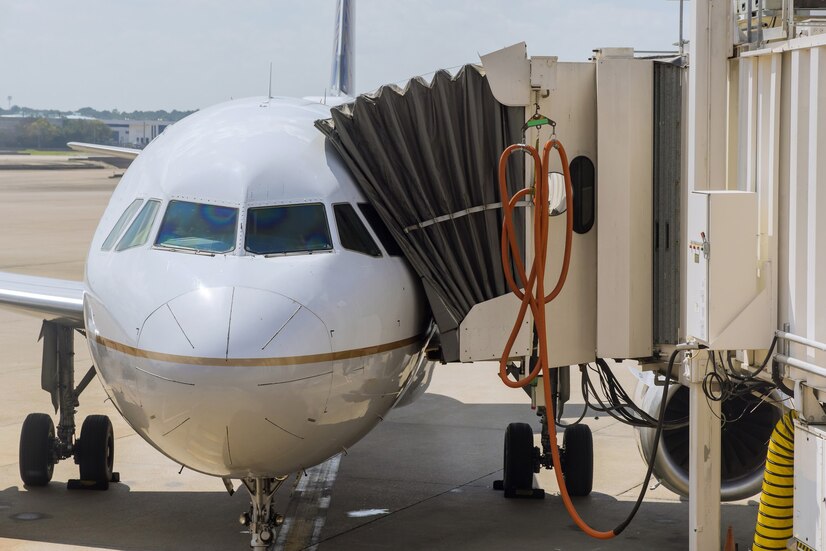Airplane Oxygen And Nitrogen: Safety Precautions To Follow

The handling of airplane oxygen and nitrogen is a critical aspect of aviation safety, influencing various aircraft systems and operational procedures. Ensuring the proper use, storage, and maintenance of these gases is paramount to guaranteeing the safety of both passengers and aviation personnel.
This exploration delves into specific safety precautions that must be meticulously followed when dealing with airplane oxygen and nitrogen, emphasizing the importance of adherence to protocols to mitigate potential risks and enhance overall aviation safety.
Oxygen Handling: Safeguarding Against Fire Hazards
Proper handling of airplane oxygen involves stringent safety measures to safeguard against fire hazards. Oxygen supports combustion, and any release of high-pressure oxygen in the presence of flammable materials can lead to a fire.
To prevent such incidents, airlines and maintenance crews must adhere to established protocols for storing, transporting, and using oxygen cylinders. Ensuring that all equipment is free from oil, grease, or any combustible substances is essential.
The science behind this precaution lies in the understanding of the fire triangle: oxygen, fuel, and heat. By eliminating one of these components, particularly excess oxygen or potential fuels, the risk of fire is significantly reduced, contributing to a safer aviation environment.
Nitrogen Safety: Mitigating Risks Of Inert Gas Exposure
Nitrogen, often used in aviation for various purposes, presents unique safety challenges due to its inert nature. While nitrogen itself is not combustible, it displaces oxygen in the air, creating an oxygen-deficient environment. Personnel working in areas where nitrogen is in use must be aware of the risks of oxygen deprivation and take appropriate precautions, such as utilizing oxygen monitors.
Additionally, preventing nitrogen accumulation in enclosed spaces is crucial to avoid hazardous conditions. The science behind nitrogen safety involves understanding its tendency to displace breathable air, emphasizing the need for vigilant monitoring and adherence to safety guidelines to mitigate the risks associated with inert gas exposure.
Cylinder Inspection And Maintenance: Ensuring Structural Integrity
The structural integrity of oxygen and nitrogen cylinders is paramount to prevent leaks, ruptures, or other malfunctions. Regular inspection and maintenance of these cylinders are essential components of safety protocols. Visual inspections, hydrostatic testing, and thorough checks for corrosion or damage are standard practices to ensure the structural integrity of the cylinders.
The logic behind this precaution lies in material science and the understanding of how metals, especially those used in cylinder construction, can degrade over time due to various factors, including exposure to pressure and environmental conditions. Properly maintained cylinders contribute to a reliable and secure storage system for oxygen and nitrogen, reducing the risk of leaks or failures during usage.
Proper Ventilation: Preventing Accumulation Of Gases In Confined Spaces
Adequate ventilation is a critical safety precaution when handling aircraft oxygen and nitrogen, especially in confined spaces. Proper airflow prevents the accumulation of gases, reducing the risk of oxygen displacement or the buildup of nitrogen in areas where personnel are working. The design and maintenance of ventilation systems, including installing exhaust fans or vents, play a crucial role in ensuring a safe working environment.
This precaution involves understanding the behavior of gases and their potential to concentrate in enclosed spaces. Effective ventilation strategies mitigate the risk of oxygen deficiency or inert gas buildup, creating a safer workspace for aviation personnel.
Training And Awareness: Empowering Personnel With Knowledge
Comprehensive training and awareness programs for aviation personnel are integral to ensuring safety in handling airplane oxygen and nitrogen. Training should cover the properties of these gases, potential risks, proper handling procedures, and emergency response protocols.
Creating a culture of awareness emphasizes the importance of adhering to safety guidelines and reporting any anomalies promptly. The science behind this precaution lies in human factors and the understanding that well-informed and trained personnel are crucial components of a robust safety framework.
The industry enhances its overall safety culture by empowering aviation personnel with the knowledge to recognize and respond to potential hazards. It reduces the likelihood of accidents related to oxygen and nitrogen handling.
Conclusion:
The safety precautions associated with handling airplane oxygen and nitrogen are integral to maintaining a secure aviation environment. From safeguarding against fire hazards during oxygen use to mitigating risks of inert gas exposure with nitrogen, each precaution contributes to the overall safety of aviation operations.
By prioritizing cylinder integrity, proper ventilation, and comprehensive training, the aviation industry establishes a robust safety framework that minimizes the potential risks associated with the handling of airplane oxygen and nitrogen. Diligence in adherence to these precautions is essential to uphold and enhance aviation safety standards.
Read Also:
























